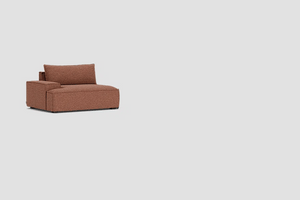
How to Clean Sofa Fabric: Expert Tips for Maintaining Your Upholstery
Keeping our sofas clean can seem like a daunting task, especially with the different types of fabric available. Whether it's a spill from a cup of rooibos tea or the dust from a windy day in Johannesburg, our sofas endure a lot. Understanding the right cleaning methods can help maintain the fabric's appearance and longevity.
In this guide, we'll explore straightforward steps to effectively clean various sofa fabrics. By following these tips, we can ensure our sofas remain inviting and comfortable for years to come. Let's dive into the essentials of sofa fabric care.
Importance Of Cleaning Sofa Fabric
Cleaning sofa fabric's crucial. It not only maintains appearance but also extends its lifespan. Dirt and grime accumulate quickly due to daily use, causing fabric wear. Regular cleaning reduces build-up, keeping our sofas looking fresh.
Moreover, sofa fabric traps allergens like dust mites and pet dander. Clean fabric improves indoor air quality, benefiting those with allergies or respiratory issues. Upholstered furniture holds odours; spills and stains contribute to lingering smells. Clean sofas eliminate these, creating a pleasant living environment.
Neglecting sofa fabric cleaning leads to permanent stains and material degradation. Different fabrics need specific care, yet a consistent cleaning routine ensures durability across types, providing a long-lasting, comfortable seating option.
The process doesn't just involve vacuuming. Cleaning agents and methods vary by fabric type. For instance, microfiber sofas require different products than leather ones. Understanding these distinctions is key to proper maintenance. It ensures our sofas stay beautiful and comfortable.
So, cleaning sofa fabric is more than just an aesthetic task. It's about longevity, health, and maintaining a welcoming home atmosphere.
Types Of Sofa Fabrics
Understanding sofa fabric types helps in choosing the perfect cleaning method. Different materials require specific care to keep them looking their best and extend their lifespan.
Natural Fabrics
Natural fabrics, including cotton, linen, wool, and silk, offer various benefits and challenges. Cotton, a common choice, is breathable and durable but prone to stains. Linen provides an elegant look and exceptional breathability yet wrinkles easily. Wool, known for its durability and resistance to pilling, can be less resistant to water damage. Silk brings luxury and shine to sofas, but it's delicate and needs professional cleaning.
Synthetic Fabrics
Synthetic fabrics such as polyester, nylon, and acrylic offer distinct advantages. Polyester is highly resistant to stains and fading, making it ideal for homes with kids or pets. Nylon, strong and elastic, stands up well to wear and tear but can attract dust and require regular vacuuming. Acrylic mimics the look and feel of wool but is more resistant to moths and mildew, though it may pill with heavy use.
Materials And Tools Required
Properly cleaning sofa fabric is essential for maintaining its look and extending its lifespan. Let's dive into the materials and tools you'll need.
Cleaning Solutions
Selecting the right cleaning solutions is crucial. For water-safe fabrics, a mild detergent mixed with water works well. Enzyme-based cleaners are effective for tough stains. For natural fabrics like wool or silk, look for pH-neutral cleaners. Spot testing in an inconspicuous area is advisable to avoid damage.
- Mild detergent (for general cleaning)
- Enzyme-based cleaners (for tough stains)
- pH-neutral cleaner (for delicate fabrics)
Tools And Equipment
Having the right tools can simplify the process. A vacuum cleaner with an upholstery attachment helps remove dust and debris. Soft-bristled brushes can help loosen dirt for a more thorough clean. Microfiber cloths are great for wiping down surfaces without causing damage. Steam cleaners are effective but should be used cautiously, especially on delicate fabrics.
- Vacuum cleaner (with upholstery attachment)
- Soft-bristled brushes (for loosening dirt)
- Microfiber cloths (for wiping surfaces)
- Steam cleaner (for deep cleaning)
Equipped with these materials and tools, you're ready to clean your sofa effectively.
Step-by-step Cleaning Process
Pre-cleaning Preparations
First, always check the care label on your sofa fabric. Different materials require different treatments. Prepare the necessary tools: vacuum cleaner, soft-bristled brush, microfiber cloths, and your chosen cleaning solution. Test the cleaning solution on a hidden area to ensure it won't damage the fabric. Clear the sofa of any throws or cushions, and ensure the area is well-ventilated if using chemical cleaners. Lay down a drop cloth to protect the floor around the sofa.
Surface Cleaning
Start by vacuuming the entire sofa, using a soft brush attachment. This removes loose dirt and prevents it from embedding into the fabric. Pay extra attention to crevices and seams where crumbs and debris tend to collect. Use a lint roller on fabric that attracts a lot of dust and pet hair. For stains, gently blot with a slightly damp, microfiber cloth. Avoid scrubbing as this can damage the fibres and cause the stain to spread. Apply a small amount of mild detergent or cleaning solution to the cloth, and gently clean the affected area.
Deep Cleaning Methods
For a thorough clean, consider using a steam cleaner, particularly for fabrics like cotton and polyester. Follow the device's instructions to avoid any risk of water damage. If steam cleaning isn't an option, a mixture of water and white vinegar can work wonders: mix them in a 1:1 ratio, dampen a cloth, and apply to the fabric. Allow it to air dry completely. For stubborn stains, an enzyme-based cleaner can break down organic material. Just test it on an inconspicuous area first. Finally, use a soft brush to fluff the fabric and keep it looking fresh.
By keeping these steps in mind, maintaining your sofa fabric's appearance and longevity becomes easier.
Tips For Maintaining Sofa Fabric
Maintaining sofa fabric properly keeps it looking fresh, ensures durability, and improves overall home hygiene. Our expert advice offers practical steps to take care of various fabric types, enhancing both appearance and lifespan.
Regular Vacuuming
Regular vacuuming prevents dust and dirt from settling into the fabric. Use an upholstery attachment and vacuum the entire sofa weekly. Pay special attention to crevices where debris accumulates. This simple step reduces allergens and maintains a clean look.
Immediate Stain Treatment
Treating stains promptly stops them from setting in. Blot spills immediately with a clean, dry cloth to absorb as much liquid as possible. Avoid rubbing as it spreads the stain. Use a fabric-specific cleaner once the initial blotting is done.
Rotating Cushions
Rotating cushions ensures even wear, maintaining shape and appearance. Swap cushions weekly and flip them to avoid one-sided wear. This practice keeps the sofa looking uniform and extends its lifespan.
Protecting From Sunlight
Direct sunlight can fade fabric and weaken fibres. Position sofas away from windows or use curtains and blinds to filter sunlight. UV-protective window films also help preserve fabric colour and quality.
Using Fabric Protectors
Applying fabric protectors shields from stains and spills. Products like Scotchgard create an invisible layer that repels liquids. Follow the manufacturer’s instructions for application and reapply after cleaning.
Professional Cleaning
Annual professional cleaning deepens fabric cleanliness and extends longevity. Expert cleaners use specialised equipment and techniques suitable for delicate fabrics, removing deep-set dirt and allergens effectively.
Following these maintenance tips ensures our sofa's look remains vibrant while enhancing durability and overall home cleanliness.
Common Mistakes To Avoid
Cleaning sofa fabric may seem straightforward, but there are common mistakes that can lead to damage. We’ve gathered these insights to help protect your sofa and keep it looking its best.
Using the Wrong Cleaning Products
Using generic household cleaners can harm your sofa fabric. Different fabrics require specific cleaning agents. For example, polyester may handle mild detergents, but wool or silk needs specialised cleaners. Check the label on your sofa or consult the manufacturer's guidelines before applying any products.
Over-Saturating the Fabric
Soaking your sofa fabric in water is a big no-no. Excess moisture can lead to mould growth and damage the fabric's structure. When spot cleaning, use minimal water and blot rather than rub to prevent water from seeping into deeper layers. Steam cleaners can be effective if used correctly, but avoid direct high-pressure contact on delicate materials.
Ignoring the Manufacturer's Instructions
Each sofa comes with care instructions for a reason. Ignoring these guidelines can void warranties and damage the fabric. Always review the manufacturer's recommendations before attempting any cleaning. Following these instructions ensures that the fabric retains its texture and colour over time.
Scrubbing Stains Aggressively
Aggressive scrubbing can cause fabric fibres to fray or break. Instead, gently blot stains using a cloth. Patience is key; pressing too hard will spread the stain or push it deeper into the fabric. For stubborn stains, it’s better to seek professional help.
Using Incorrect Vacuum Attachments
Using the wrong vacuum attachments can scratch or damage the fabric. Use upholstery attachments specifically designed for sofas. These attachments help remove dirt without causing wear and tear. Regular vacuuming with the proper tools also extends the life of your sofa, keeping it fresh and clean.
Neglecting to Test Cleaning Solutions
Always test cleaning solutions on an inconspicuous area first. This step is crucial to avoid discolouration or damage. Apply the solution to a small patch, wait for it to dry, and check for any adverse reactions before proceeding with the entire surface.
By avoiding these common mistakes, we can maintain our sofa fabric in top condition and enjoy a comfortable, clean seating area for years.
Conclusion
Regular sofa fabric cleaning is essential for maintaining a comfortable and inviting living space. By understanding the specific needs of different fabric types and using the right tools and techniques we can keep our sofas looking their best. Remember to avoid common cleaning mistakes and follow manufacturer’s guidelines to ensure the longevity of your furniture. With a little effort and the right approach we can enjoy a clean and cosy sofa for years to come.
Frequently Asked Questions
Why is regular sofa fabric cleaning important?
Regular sofa fabric cleaning is crucial to maintain its appearance, prevent the build-up of allergens, and ensure longevity. It helps in keeping the sofa looking fresh and clean while also contributing to a healthier home environment.
What are some essential tools for cleaning sofa fabric?
Essential tools for cleaning sofa fabric include mild detergent, enzyme-based cleaners, and a vacuum cleaner with appropriate attachments. These tools help in effectively removing dirt, stains, and allergens without damaging the fabric.
How often should I vacuum my sofa?
It is recommended to vacuum your sofa at least once a week to remove dust, dirt, and allergens. Regular vacuuming helps in maintaining the fabric's appearance and prolonging the life of your sofa.
What should I do if I spill something on my sofa fabric?
If you spill something on your sofa fabric, it’s important to treat the stain immediately. Blot the spill with a clean cloth to absorb the excess liquid and then use an appropriate cleaning solution, ensuring to follow the manufacturer’s instructions.
Why is it important to rotate sofa cushions?
Rotating sofa cushions regularly helps in even distribution of wear and tear, preventing uneven flattening and extending the life of the cushions. It also keeps the sofa looking uniform and comfortable for seating.
Can sunlight damage sofa fabric?
Yes, prolonged exposure to direct sunlight can fade and weaken sofa fabric over time. To protect your sofa, position it away from direct sunlight or use protective covers when necessary.
Are there any common mistakes to avoid when cleaning sofa fabric?
Yes, common mistakes include using the wrong cleaning products, over-saturating the fabric, ignoring the manufacturer’s instructions, scrubbing stains aggressively, using incorrect vacuum attachments, and not testing cleaning solutions beforehand. Avoiding these errors helps in keeping the fabric in good condition.
How often should I have my sofa professionally cleaned?
It is advisable to schedule professional cleaning for your sofa at least once a year. Professional cleaning helps in deep-cleaning the fabric, removing stubborn stains, and enhancing the overall appearance and hygiene of your sofa.


